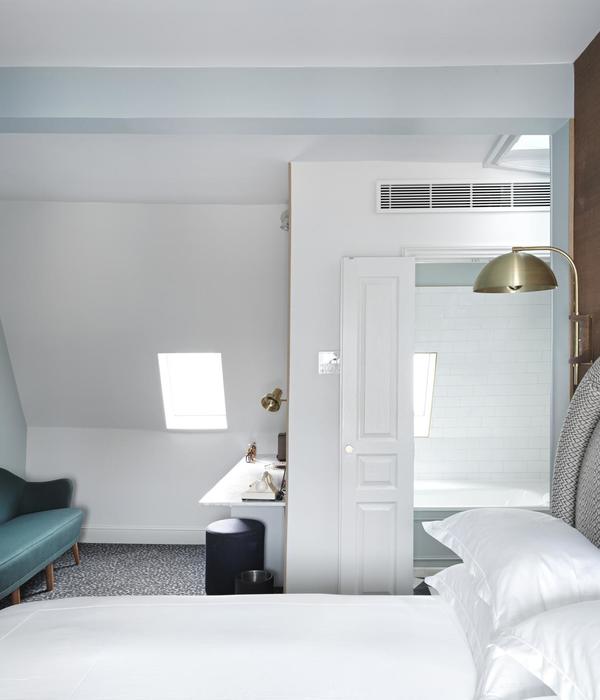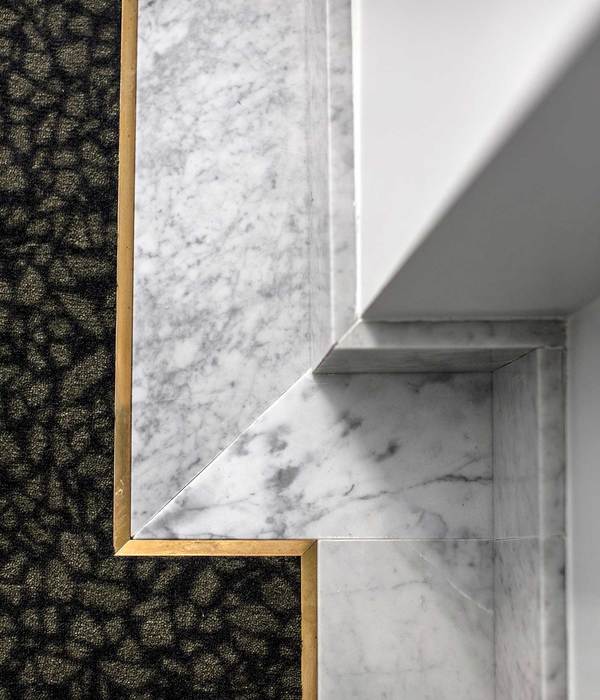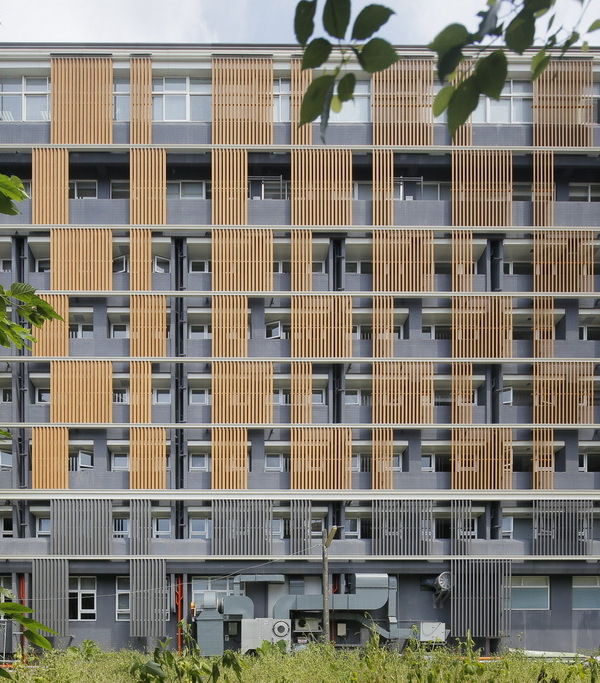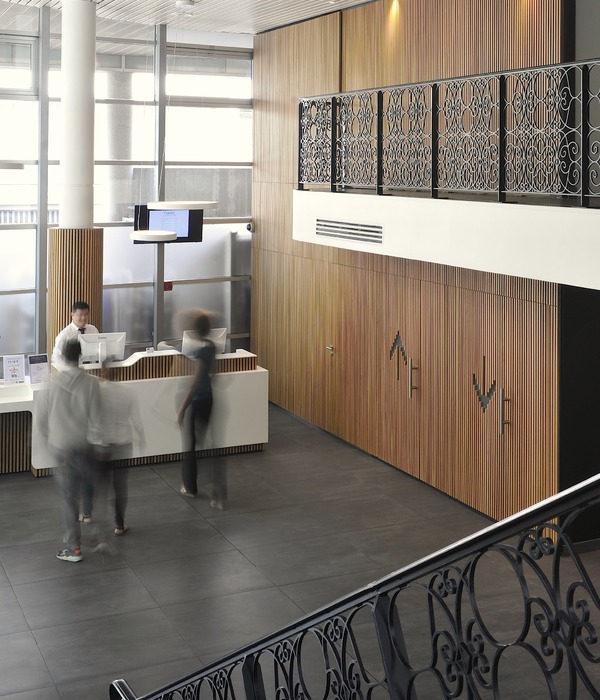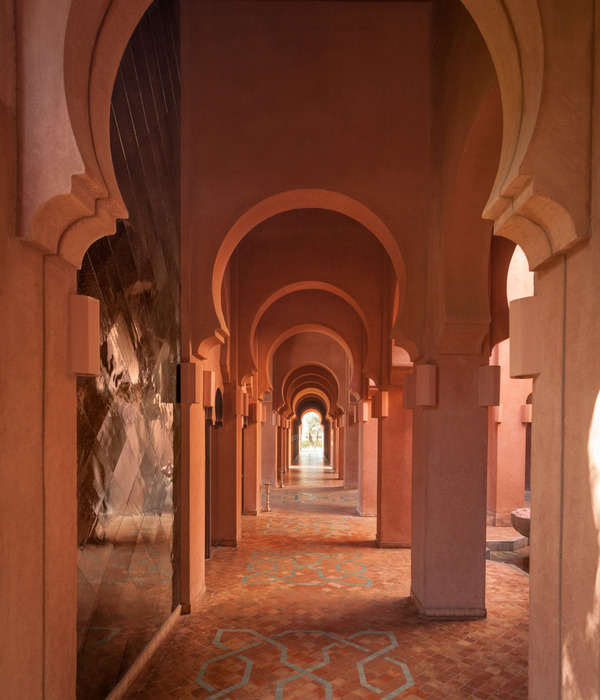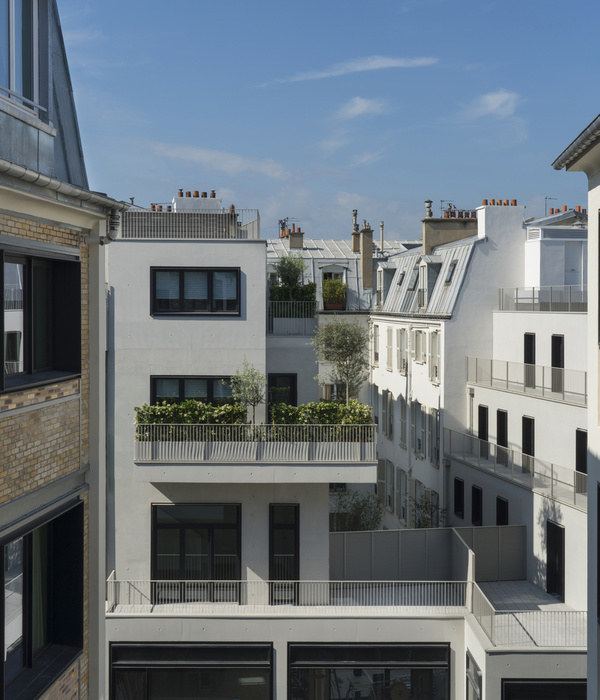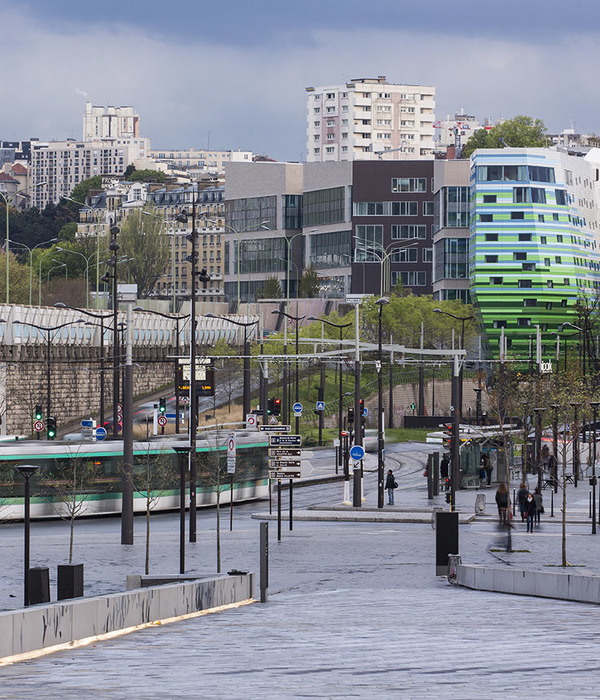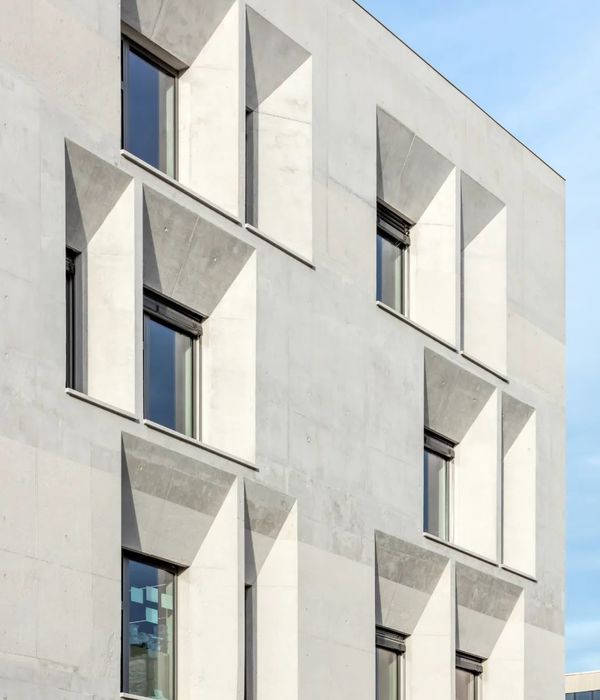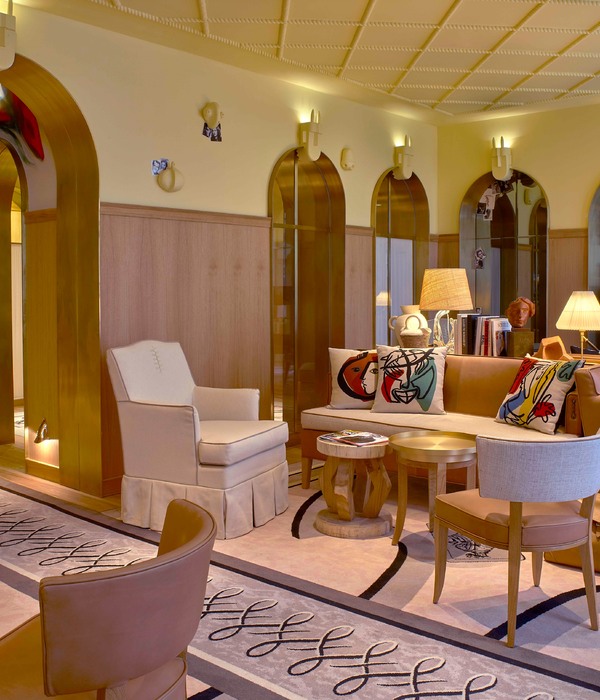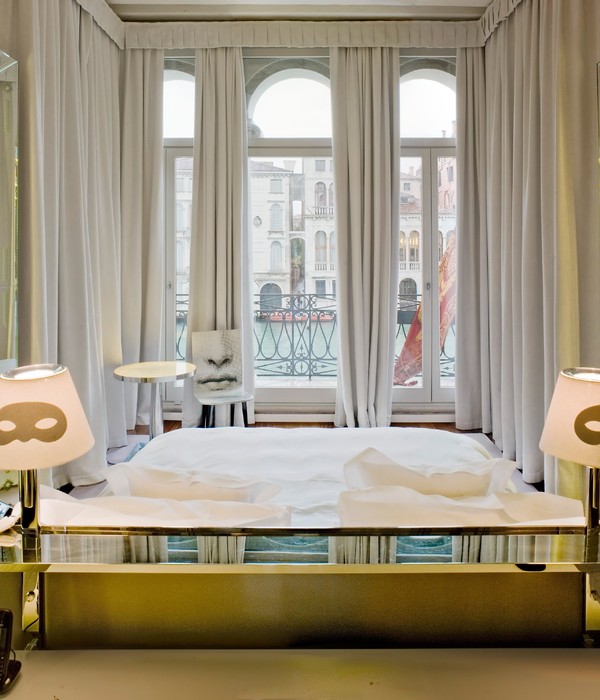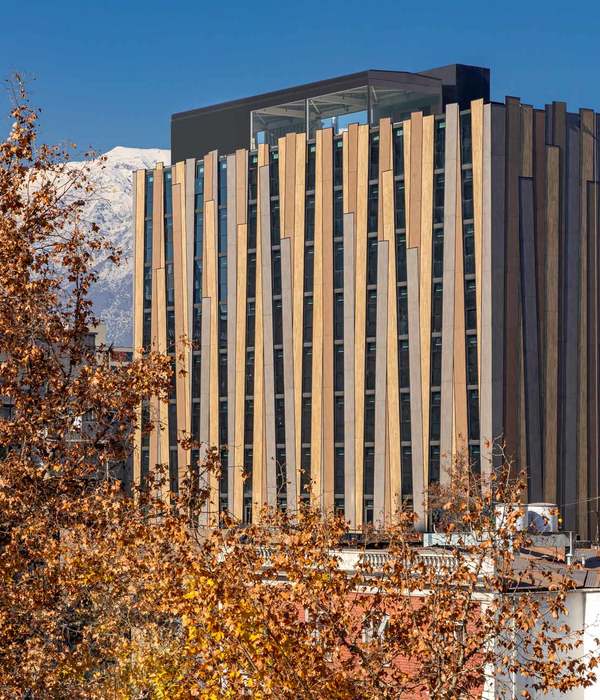The project is the outcome of an invitation in 2005 of a family-based wine-making and agro-business company to master plan an innovative resort concept that would combine the rural experience of wine and olive oil production, with the amenities of leisure destination. With 66 hectares, the site is in the vicinity of the whitewashed town of Montemor-o-novo, in the Alentejo, near the UNESCO-listed city of Évora. Located on a gentle valley facing South and overlooking the skyline of the town’s medieval castle, the master plan was devised in a system of clustered villas and terraced row-houses reminiscent of the former agricultural compounds of the Alentejo, known as “monte”, which literally means “mount” or “hill” in English; an etymological reference to its topographic condition. In addition, a small lake cools the air and is used for leisure activities besides serving as a sustainable water-retaining basin for agriculture.
The hotel is the main building and services centre of the whole resort. The programme includes reception, clubhouse, restaurant, spa with indoor pool and back-of-house service support to the adjacent guesthouses. In addition, the building functions as a winery, where guests experience the whole winemaking process, from grapes selection, crushing, fermentation and pressing, to barrel aging, blending, filtering and bottling.
Inspired on the white walled patios of the Alentejo, the building was conceived as a hinged prism from which its four corners were cut-off (reception, chill-out, restaurant terrace and industrial patio), creating areas of shade and intimacy. Topographically, the volume has been carefully positioned to meet the contours of the ground with the least change. The large window of the indoor pool at the lower level, suggests itself as a wall folded to release the views of the landscape. Inside, oak wood fluted wainscots and thick black slate from Alentejo, convey an atmosphere of comfort and warmth, creating a striking contrast with the roughness of the areas devised for the wine production operation.
Overlooking the lake, the guest suites of the hotel are broken down in a series of rows and terraces, forming a kind of amphitheatre adjacent to the main building. To adjust to the topography, minimize their visual impact and make the most of the lake views, these 2-storey units are half-buried in two terraces following the topographic contours. Within this setting, it was possible to create a discreet intermediate level for parking between terraces from which the entry is made by descending into a sunken patio. In plan, these units are centralized around the living room, which opens onto the main patio and lake views. A beam structure simultaneously generates a protective shade from the south sun and offers the opportunity for an evocative vine gazebo that blends its presence with surrounding landscape.
Besides designing the master plan, the hotel, the apartments and a nucleus of villas, PROMONTORIO was invited to curate, the invitation to four other studios to design the remaining nucleuses of villas, namely: Peter Märkli, of Zurich, Sergison Bates, of London, Carrilho da Graça, of Lisbon, and José Paulo dos Santos, from Porto.
{{item.text_origin}}

